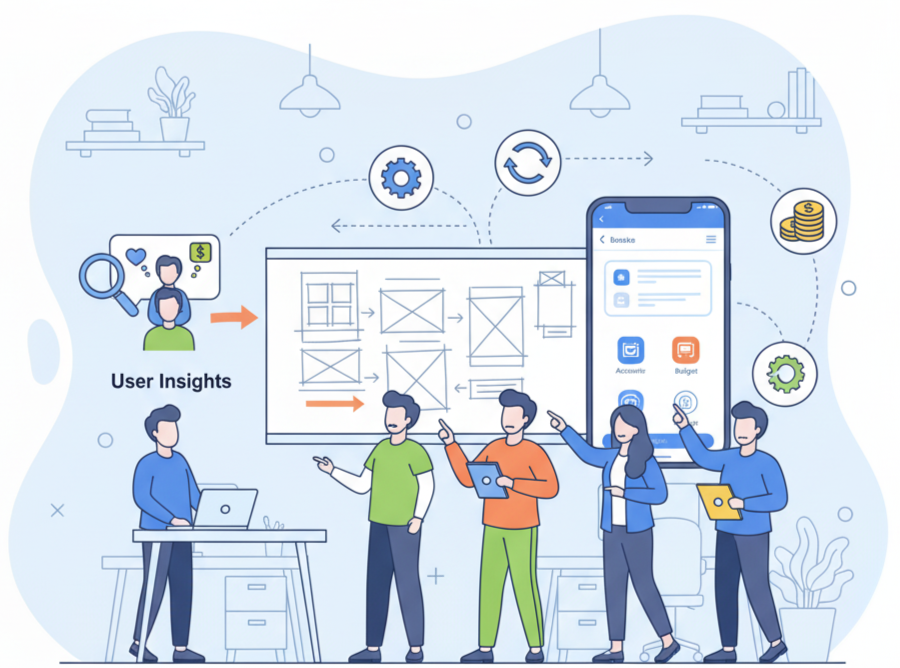Now Reading: Agile Affinity Mapping: Banking App UX Case Study
-
01
Agile Affinity Mapping: Banking App UX Case Study
Agile Affinity Mapping: Banking App UX Case Study
Finding the Signal in the Noise: Redesigning a Banking App with User-Centric Insights
A UX research team analyzed interview transcripts from 15 users to uncover critical pain points, preventing a costly redesign based on assumptions and instead informing a successful, evidence-based overhaul of their mobile app.

The Challenge
The team had just completed 15 hour-long user interviews about the app’s bill payment feature. They were faced with over 200 pages of transcripts—a mountain of valuable but unstructured qualitative data. They needed a systematic way to identify patterns and actionable insights without getting lost in the details or letting personal biases influence the outcome.
The Process: From Chaos to Clarity
Before the Planner: Gathering Raw Data
Before using the planner, two researchers spent a day reviewing all transcripts and extracting key “insight snippets”—direct quotes, observed pain points, and strong user opinions. They put each snippet onto an individual digital card in FigJam. Each card was color-coded by the participant to maintain context and ensure no single user’s voice dominated the findings.
Step 1: Prepare for Affinity Mapping
The “Prepare” step in the planner was used to set a focused goal: “Synthesize interview data to identify the top 5 usability issues in the bill pay workflow and their root causes.” The session included the entire UX team, plus a product manager and a front-end developer, to ensure the findings were understood by those who would build the solution.
Step 2: Conduct the Mapping Session
In the “Conduct” step, the team planned a 2-hour synthesis session. The detailed agenda from the planner allocated time for a quick review of research goals, followed by a long block of silent grouping of the FigJam cards. The plan also included specific time for discussing and naming the resulting clusters to create a shared language around the problems.
Step 3: Analyze and Prioritize Groups
For ‘Analyze and Prioritize,’ they decided to go deeper than just naming themes. The plan specified using the ‘5 Whys’ root cause analysis technique for the three largest groups of issues. This was chosen to push the team beyond addressing symptoms (e.g., ‘users are confused’) and uncover the core problems (e.g., ‘inconsistent UI patterns are eroding user trust’).
Step 4: Implement and Monitor Actions
The “Implement” step focused on translating insights into actionable design and development tasks. They planned to create a “Key Insights & Recommendations” document, linking each recommendation back to specific user quotes. These recommendations were then to be written as user stories and added to the Asana backlog.
After the Planner: Running the Workshop
The final report was shared with all participants 24 hours before the session, setting clear expectations and allowing everyone to come prepared. During the workshop, the structured agenda was invaluable. It prevented the session from devolving into random anecdotes. The team identified major themes like ‘unclear payment confirmation,’ ‘difficulty editing scheduled payments,’ and ‘lack of vendor search.’ The ‘5 Whys’ exercise was a breakthrough, revealing that unclear confirmations were due to inconsistent UI patterns used across the app, which was a much deeper issue than originally thought.
The Results
The planner provided the essential structure to turn a mountain of qualitative data into a clear and actionable redesign strategy. The process ensured the final design decisions were directly backed by user evidence, giving the entire team the confidence to move forward.
- Identified 3 major and 4 minor usability issues, complete with evidence-based recommendations and clear user stories.
- The subsequent redesign, based on the findings, increased the feature’s usability score by 40% in post-launch testing.
- Reduced user error rates in the bill payment workflow by 25%, leading to fewer support calls.
- Improved the feature’s App Store rating from 3.5 to 4.5 stars within three months of the update.

